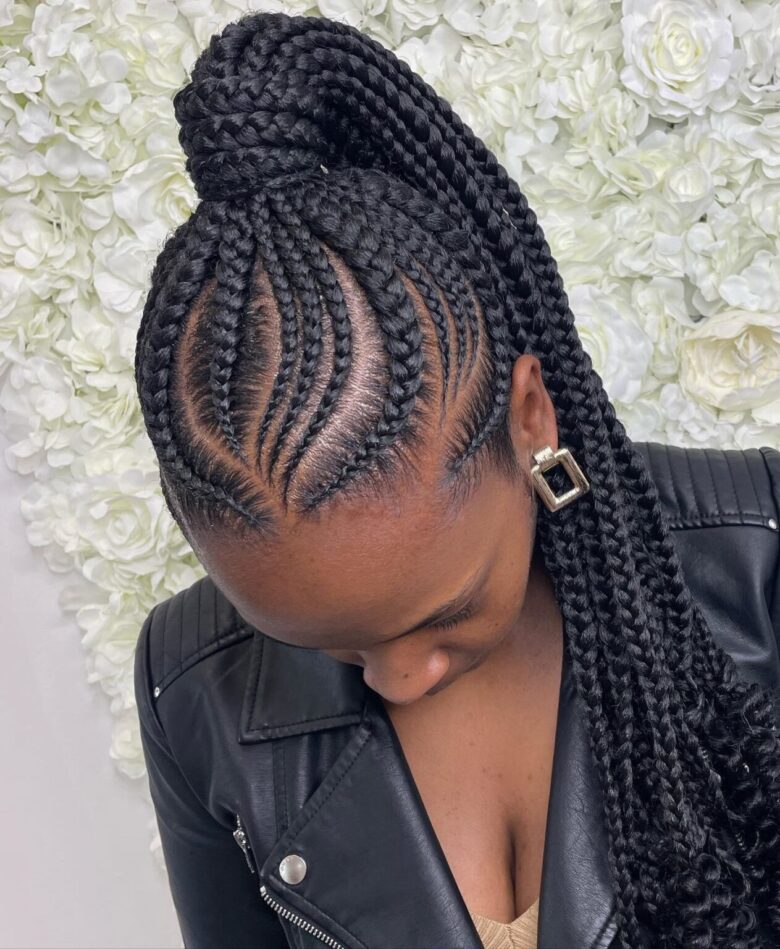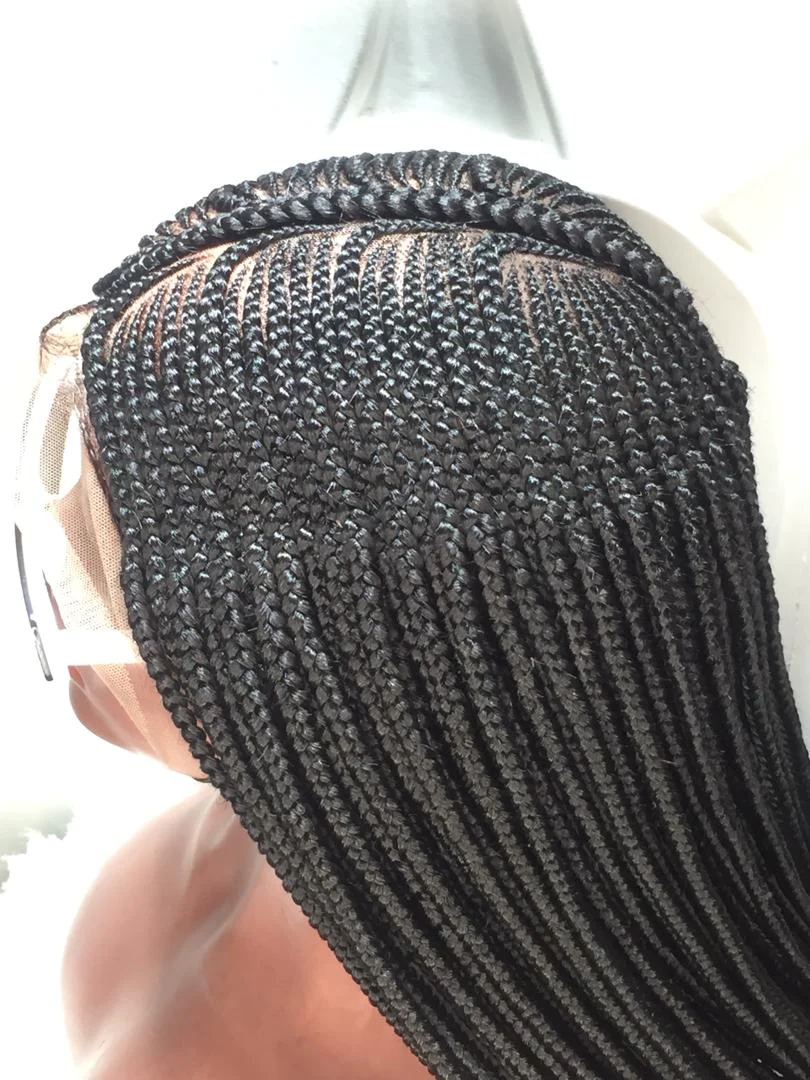As I gaze into the mirror, admiring the sculptural artistry of my newest hairstyle – neat symmetrical rows of box braids accented with cowrie shells – I’m reminded of the rhythmic beauty and rich history behind tribal braids. This elaborate style speaks a language all its own, weaving together ancestry, identity, and self-expression for black women across generations.
I recall my first introduction to braided hairstyles as a young girl, squirming impatiently while my mother parted my kinky hair into neat sections. Her fingers moved with practiced precision, under and over, as she wove my locks into orderly cornrows embellished with colorful beads. I felt an occasional tug, but mostly I reveled in our bonding during these sessions – just me, Mom, and the meditative ritual of braiding. The resulting geometric rows were tight works of art. My mother called them “tribal braids,” a phrase I came to associate with beauty, tradition, and cultural pride.

Source: bijouxhair.com
Contents
Braids as Cultural Connection
Even now, decades later, I can still sense the strong attraction to braided hairstyles as a celebration of my history and an artistic statement. These days, I prefer longer styles with goddess braids styles or box braids that fall to the waist. Maybe it’s a subliminal wish to channel legendary African goddesses and queens, or maybe it’s just a desire to bring the regal aura I felt in black braiding customs into my life. Braided hairstyles have layers of meaning that go far beyond fashion for me and many other black women today. They talk beautifully about our past, femininity, inventiveness, resiliency, and beauty above all.
Braids as an Expression of Black Beauty
Beauty that emerges naturally from the divine nature of darkness rather of being determined by dominant cultural standards. Beauty interwoven with social relationships through shared experiences such as braiding sessions. Beauty as a tribute to our ancestors and a means of artistic self-expression. As a young lady, when I first experimented with lengthier braided designs like airy goddess braids and sleek box braids, I developed a greater understanding of this expansive sense of beauty.

Source: pinterest.com
Braids as Self-Expression
Adorning my hair with these braided styles felt like an affirmation of identity and a rite of passage. I recall excitedly browsing photos of braided hairstyles online, enthralled by the rainbow of hues and patterns modern braiders incorporated. I realized no two heads of braids need be identical. So I booked my first box braiding appointment with a vision of how I wanted to present myself to the world.
I entered the African braiding salon, welcomed by the lively sights and scents – women laughing and gossiping as stylists sectioned, extended, and expertly wove their tresses into works of wearable art. I settled into the sisterhood, connected not merely by braids but by shared understanding. As my stylist parted my hair into neat squares then proceeded to braid slender rows, her soothing motions eased my chatter. Occasionally she met my eyes in the mirror and smiled warmly.
The Transformative Power of Braids
I emerged from hours of painstaking braiding essentially the same energetic me, but with a new outside expression. My sleek micro braids amplified my inner beauty. That’s the sorcery of braids – their capacity to align outer presentation with inner essence.
Since that inaugural box braiding as a young adult, braided hairstyles have become a signature means of self-expression for me. The flowing, regal quality of goddess braids feels like an instant confidence boost for important occasions. I relish tailoring this versatile look to my mood by experimenting with different colors and embellishments. Do our stylistic choices actually reflect inner thoughts and emotions that words cannot capture? Can the language of braids manifest our unspoken meditations?
Beyond my own braided transformations, I admire braids on other black women as well. I’m struck by how varied braided styles uniquely complement each woman’s vibe and beauty. I recall spotting an elder on the bus wearing a stately gray crown of braids, exuding wisdom and grace. A barista at my local coffee shop sported eclectic knotless braids that perfectly reflected her artsy spirit. And I’ll never forget watching a dancer at a recital execute complex choreography, her waist-length box braids accentuating each pristine movement. Her braided choreography mesmerized me.
In recent years, goddess braids have emerged as a modern braided style that speaks to my interest in both fashion and honoring my roots. Goddess braids specifically evoke connections to historic symbols of African beauty, power and spirituality. They often incorporate long box braids styled into soft curls or waves. When I first requested goddess braids at my salon, the stylists secured my edges and then wove loose chunky braids with curved ends cascading down my back. As they pressed the final braids, I felt a surge of regal energy reminiscent of African deities and queens of the past who wore similar styles. The juxtaposition of straight braided hair and touchable curls was striking and feminine. I turn to goddess braids when I want to embody elegance and strength before big meetings or events. They remind me I have inherited the beauty and brilliance of those who came before me.
On a recent trip to Ghana, I was amazed to witness firsthand traditional and contemporary goddess braids styles worn with pride by local women. Their braided artistry clearly spoke to cultural heritage, womanhood, spiritual grounding and everyday life. Back home, I strive to draw upon that holistic viewpoint in my own braiding journey. How can I weave together ancestry, creativity, passion, peace and purpose through my hairstyle choices each day?

Source: luxtresses.com
Braids as an Evolving Language
As an avid braid-wearer, I’ve come to regard braided styles as an evolving language that we inherit from past generations yet can rewrite with modern flair. Our foremothers wove geometric braids that were pragmatic and protective. Braiding later became more ornate and expressive. Today we have boundless options for experimenting, whether with braided shape, texture, color or embellishment. Every choice represents a chance to author our own stories – fictional tales of mermaids or galaxies perhaps! – or chronicle our personal growth.
The complexity and contradictions of human experience find embodiment in braided hair. Our heads become the canvases where artists remix tradition into futuristic visions or subtle reflections of the times we live in. With each new style, we braiders hint at who we were, are, and hope to become. Will braided hairstyles continue serving as silent storytellers, revealing as much about our interior lives as exterior presentation?
I see this living lineage when braiding my little niece’s hair, carefully detangling her thick strands before sectioning them into symmetrical rows. She squirms excitedly as I incorporate her favorite colors and patterns, eagerly declaring “I want to look like a rainbow mermaid!” As I weave her hair, I feel honored to share these timeless rituals across generations. Soon her dexterous fingers will instinctively know how to loop hair just so over under over, binding the past to future.
For now, I’m grateful for the chance to experience magic in braids, whether by honoring legends or weaving new tales. The rhythmic beauty of braided hairstyles transcends time and trends. As I admire my latest braided style, I recognize my hair tells a winding story – of ancestry and originality, community and selfhood. Braiding remains an ever-evolving work of art. There is harmony in reinventing tradition without losing roots. My braids represent the union of history and vision. In reimagining the language of braids, I redefine what it means to be a black woman. With each braid, I rewrite my story.
